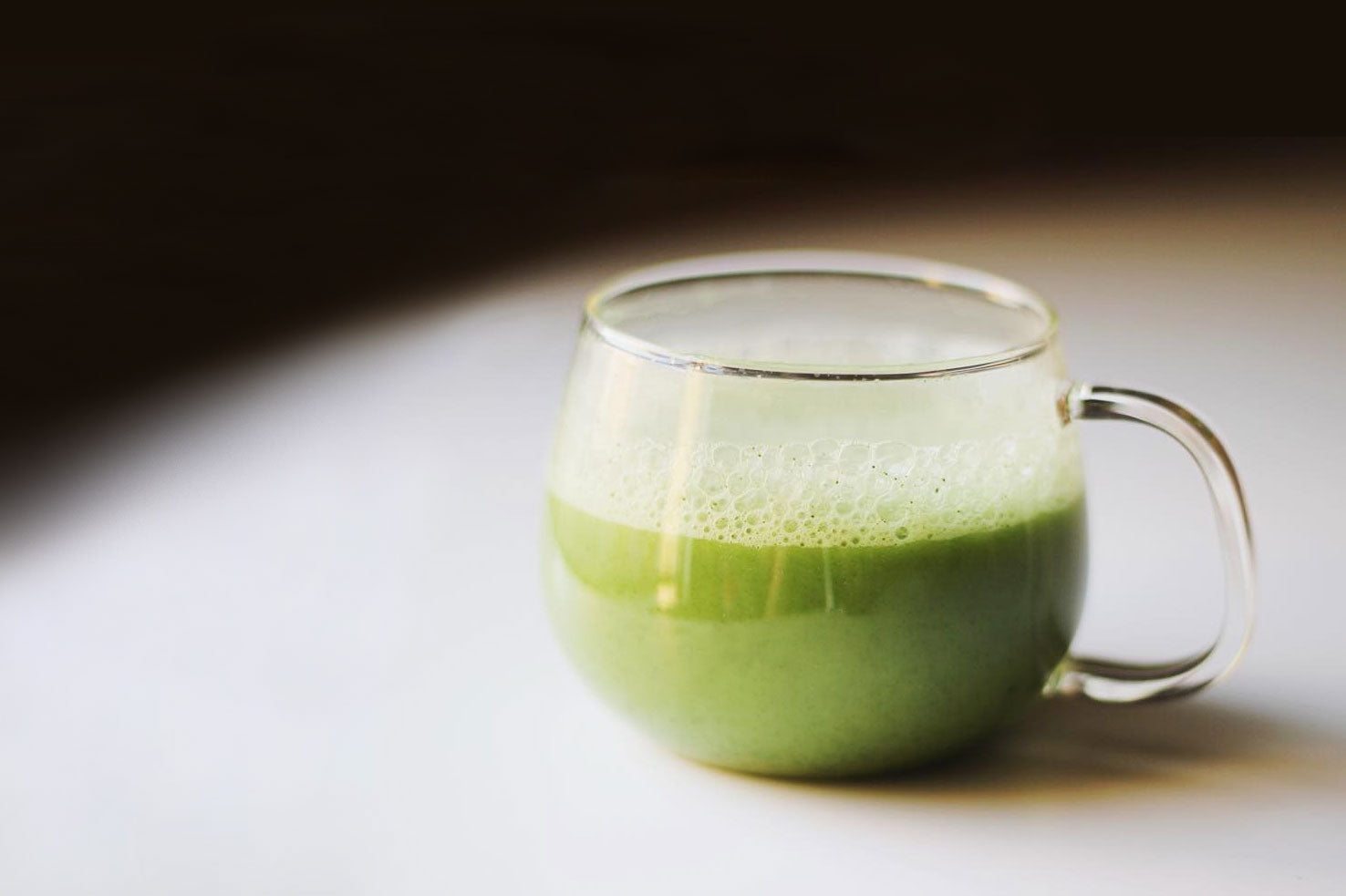It seems that everywhere you look today, matcha is promoted in one way or another. Whether it’s a green tea latte, matcha ice cream, or even as an ingredient in baked goods, it’s clear that this powdered green tea has gained a tremendous amount of attention recently.
What is matcha?
Matcha is the bright green fine powdered green tea used for centuries in the Japanese tea ceremony. It is the oldest variety of shade-grown Japanese green tea. Matcha is whisked with water to create a unique and flavorful drink.
Matcha is also used today as an ingredient in other products, including green tea ice cream, smoothies, chocolates and energy bars.
How is matcha produced?
Four weeks before harvest, the tea gardens of the famous Nishio region of Japan are covered with tarps to eliminate up to 90% of the natural light. The tea plants compensate for this loss of light by increasing chlorophyll content in their leaves, developing their characteristically rich, dark green color. This ultimately produces the vibrant green color once the leaves have been mixed with water. Protection from direct sunlight also increases the amount of amino acids found in the green tea leaves.
Only the finest hand-picked Gyokuro tea leaves can be used to make matcha. It is steamed, air-dried, sorted for grade, and cut to remove veins and stems. The dried leaves (tencha) are then stored in a freezer. When ready to be made into matcha, the tea leaves are removed from the freezer and slowly ground using granite grinding wheels, yielding only one ounce of matcha per wheel per hour. Since there are so many labor-intensive steps involved, matcha tends to be the most expensive of all green teas.
“The Greenest of Green Teas”
Unlike regular tea leaves, which are removed when brewed, tea drinkers consume the entire powdered leaf when enjoying matcha.
Matcha is sweet and smooth with just a hint of astringency. The sweetness comes from the naturally occurring compounds and plant fibers that are intensified during the shade-growing time.
The Japanese Tea Ceremony
Introduced by Zen Buddhist priests, the Japanese tea ceremony originates from the philosophy that only through Zen meditation can a person achieve enlightenment. Based on the four principles—purity, harmony, respect, tranquility—the tea ceremony, known as chanoyu, is used to teach discipline and instill respect for others. Tea schools in Japan continue to teach the etiquette and art of tea-making.
Starting after a traditional Japanese meal, the ceremony can last from three to five hours. Each element in the tea room is carefully selected by the host and is significant in its meaning. In addition to tastefully selected scrolls and flower arrangements, as many as twenty-four utensils may be used for the tea ceremony.
A small black lacquer container (natsume) contains the Japanese matcha, which is measured out with a special bamboo spoon (chashaku). The matcha is then mixed with water that is heated to 85°C (185°F), then lightly whisked with a bamboo whisk (chasen) to make a rich, frothy liquor. The tea is served in a china bowl and presented to the guest. The guest turns the bowl three times before it is consumed in three sips. The bowl is then wiped three times with a silk cloth, refilled, and passed on to the next guest.

Cooking with Matcha
Japanese cuisine has long incorporated the use of matcha powder in order to achieve a pure green tea flavor in their desserts and drinks. Matcha is a versatile ingredient that can be used in both sweet and savory recipes. It remains flavorful under the heat of cooking or baking, and makes the dish a lovely bright green color. It is also enjoyed more simply—sprinkled into a cup of tea or on top of a bowl of ice cream.
Due to matcha’s increased popularity, the powdered tea is now consumed in many other forms in addition to its traditional style. Take one look at our matcha board on Pinterest and you will see the many ways in which this tea can be sipped and incorporated into food.
It is important to distinguish the difference between cooking with matcha and drinking matcha. Ceremonial grade matcha is not intended for use in foods and dressed up drinks; it is meant to be enjoyed on its own, whisked into hot water. Culinary-grade matcha, however, is perfect for mixing into food and beverages, as the quality of the tea is not nearly as important in these cases.
For more recipes, head over to our Tea Recipes.
Drinking Matcha
For home use, we recommend that you start with 1/2 teaspoon of matcha to 8 ounces of freshly boiled water, stir vigorously and enjoy. You may increase the amount of matcha you use as this refreshing taste becomes more familiar.



